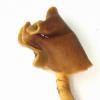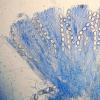
30-11-2025 10:47
 William Slosse
William Slosse
I recently found a collection of small Peziza sp.

27-11-2025 12:01
Thomas Læssøehttps://svampe.databasen.org/observations/10496727

27-11-2025 11:46
Thomas Læssøehttps://svampe.databasen.org/observations/10493918

17-09-2025 10:50
Heather MerryleesHi there!I am hoping for any advice on the identif

29-11-2025 08:40
 Andreas Millinger
Andreas Millinger
Hello,on a splintered part of a branch on the grou

28-11-2025 16:45
Nogueira HéctorNovember 23, 2025 Requejo de Sanabria (León) SPAI

25-11-2025 14:24
Thomas Læssøehttps://svampe.databasen.org/observations/10490522

27-11-2025 15:41
Thomas LæssøeSpores brownish, typically 4-celled; 26.8 x 2.4;

27-11-2025 11:31
Thomas LæssøeCollectors notes: Immersed ascomata, erumpent thro

23-09-2025 13:31
Thomas Læssøehttps://svampe.databasen.org/observations/10534623
Cap up to 2 cm, irregularly lobed; inrolled; free from stipe, upper surface brown, undersurface cream to pale brown, pubescent,
Stipe up to 5 cm long, up to 1 cm wide, white to cream.
Spores 19-22 x 11.5-14.5, elliptical, smooth; with one large oil droplet.
Paraphyses with subclavate to clavate apices
?

Difficult to say something with only one specimen... Three species could be investigated: Helvella latispora, H. albella and H. elastica (although the latter is less obvious).
More data about the cells on the outer surface will be useful, and also on the ecology.
Is there a brown pigment into the paraphyses?
Best,
Fidel
If we believe in the spore size given by Boudier when describing H. latispora, your collection should be H. stevensii, as far as we consider separated these last two.
Regards
Mario

